 Situations that Cause Pregnant Women to Feel Unsafe near Other Pedestrians: a Quantitative Analysis Situations that Cause Pregnant Women to Feel Unsafe near Other Pedestrians: a Quantitative Analysis |
<The 7th International Symposium on Environment-behavior Research (EBRA2006),
Dalian, China, October, 2006 >
Ryuzo Ohno, Yuki Takayama and Masashi Soeda |
|
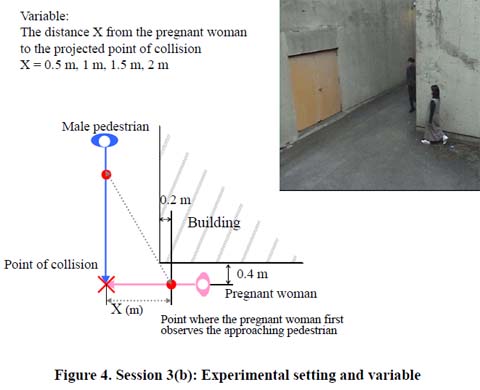 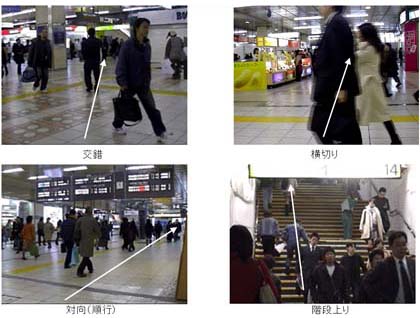 |
Pregnant women often feel uneasy when they go through spaces crowded with
pedestrians. They tend to avoid going out to town out of the worry that
they might bump against others and cause serious physical damage to themselves
and the unborn baby. This study examines the functional relationships between
pregnant women’s feelings of danger and several potentially influential
situational factors as a step toward developing designs for public spaces
that are safe and comfortable for pregnant women.
Full paper -> PDF |
|
|
 Passengers’ distance/depth perception along underground pathways around subway stations
Passengers’ distance/depth perception along underground pathways around subway stations
|
|
<Proceedings of the International Academic Conference on Underground Space,
pp. 97-102, Nov. 2006.><EBRA2004>
Ryuzo Ohno, Maiko Ogura, Masashi Soeda, Megumi Katayama
|
|
|
|

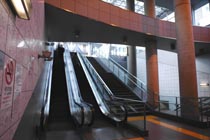
|
|
The new subway lines in the middle of Tokyo run very deep in the ground since they have to be constructed beneath already
existing subway lines. The passengers, therefore, must travel a long distance from the ground level to the platform. During their long
passage through underground paths, they may suffer from stress caused by feelings of claustrophobia and latent concerns for safety.
The present study examines the influence of environmental factors on distance/depth perception through a series of experiments
conducted along underground paths located near subway stations. Subjects (16 male and 11 female university students) were divided
into 8 groups each consisting of 3 or 4 people. Each subject group, accompanied by an experimenter, was asked to walk along two
underground paths that had different environmental features. Each subject was asked to estimate the ratio of the length of the
second path to the first one. At the same time, they were also asked to rate the overall atmosphere of the path. Seven such experimental
sessions were conducted using 12 paths around 3 subway stations in the middle of Tokyo. Physical characteristics of the paths such as width,
ceiling height, luminance and number of turns were either measured on site or taken from architectural drawings. The results of
the experiment generally support the hypothesis that certain pathway design features will influence distance/depth perception.
The experiment revealed that wider and more open paths tended to be judged shorter and set less deep underground. It was also found that
paths with more turns were judged longer, though this effect was not found for paths running through an atrium. As for the effect of the
overall atmosphere along the path, spaces that provided impressions of brightness, openness, cleanliness and safety made subjects judge
the paths to be shorter and less deep.
Full paper -> PDF
|
|
|
 The effect of the configuration and the interior design of a virtual weightless space station on human spatial orientation
The effect of the configuration and the interior design of a virtual weightless space station on human spatial orientation
|
|
<Acta Astronautica, No. 56, pp. 1005-1016, 2005>
Hirofumi Aoki, Ryuzo Ohno, Takao Yamaguchi
|
|
In a virtual weightless environment, subjects’ orientation skills
were studied to examine what kind of cognitive errors people make when
they moved through the interior space of virtual space stations and what
kind of visual information effectively decreases those errors. Subjects
wearing a head-mounted display moved from one end to the other end in space
station-like routes constructed of rectangular and cubical modules, and
did Pointing and Modeling tasks.
In Experiment 1, configurations of the routes were changed with such variables as
the number of bends, the number of embedding planes, and the number of planes with respect to the body posture.
The results indicated that spatial orientation ability was relevant to the variables and that orientation errors
were explained by two causes. One of these was that the place, the direction, and the sequence of turns were incorrect.
The other was that subjects did not recognize the rotation of the frame of reference, especially when they turned in
pitch direction rather than in yaw.
In Experiment 2, the effect of the interior design was examined by testing three design settings. Wall colors that showed the allocentric frame of reference and the different interior design of vertical and horizontal modules were effective; however, there was a limit to the effectiveness in complicated configurations.
Full paper → PDF |
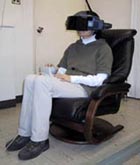 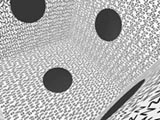
|
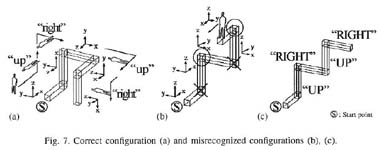 |
|
to TOP
|